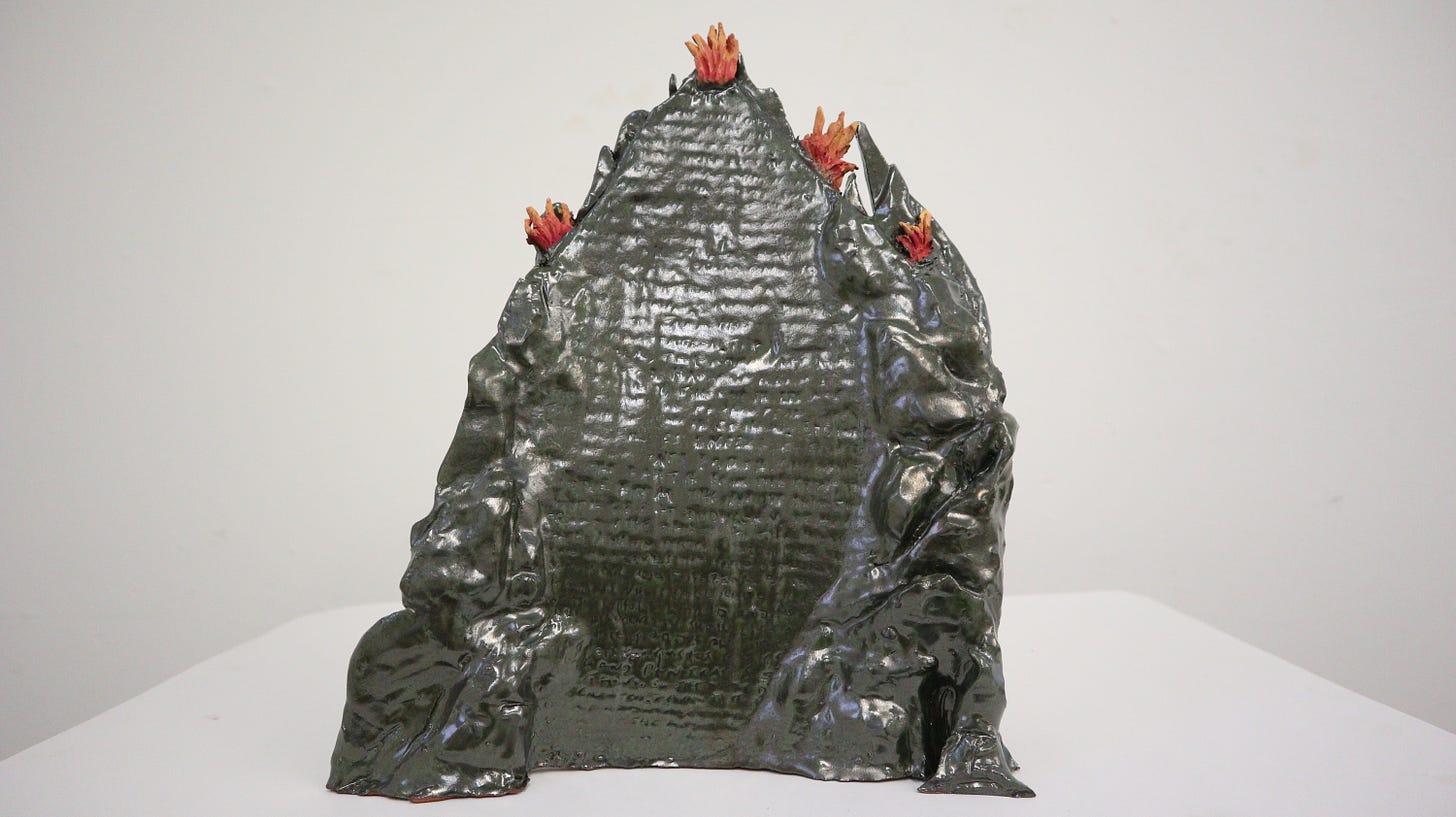The Ouroboros of Studio Practice
Myth-making, alchemy and the never-ending cycle of time.
The past few months have been a whirlwind of making, thinking, and doing. I kicked off 2025 with a residency at Vermont Studio Center, and it's hard to put into words how transformative the experience was. That time was invaluable—giving me the space and focus to refine pieces that have been evolving over the past year, pushing new work to the finish line for my upcoming exhibition, opening March 1.
Vermont Studio Center is such a special place and I know I’m late to the game on this one. I have long wanted to attend (somewhere on Reddit, someone called it the “residency kindergarten” for newbies), but I was never sure how to make it work—both in terms of my practice and time away. In my younger days, it was alway difficult for me to articulate how my community facing work would work in a short term residency context. As one ages, more responsibilities and challenges present themselves, we all can find these realities in everyday life - bills, work, cost. Luckily I have a super supportive partner who has encouraged me to give myself permission, especially in regards to seeing how a residency would alter my practice.
As with any residency, the experience is shaped by the people you share space with. I was lucky to be in the Schultz building with an incredible group of artists, a "squad" of makers who made those days all the more meaningful - engaging in feedback, encouragement and unabashed support. There is so much that Vermont Studio Center offers and I encourage everyone to check it out.
As of this month, I’ve recently begun a new residency at the Kimmel Harding Nelson Center for the Arts in Nebraska. It’s a lovely, quiet experience—a stark contrast to the structure of Vermont (in terms of size and residents). Intentionally so, my focus here feels more open-ended, allowing for exploration and experimentation in ways I hadn’t anticipated. It’s a shift in pace, and I’m embracing the uncertainty, letting the work take shape without a predetermined outcome. More on that soon.
Alchemical processes and mystical landscapes
As I prepare for an upcoming 2-person exhibition at Neue Welt called Terra Magia, I’ve been immersed in the ways myth and material intertwine—how objects, symbols, and speculative narratives shape our understanding of transformation. I’m personally exploring this unidentified speculative mythos in attempt to bring together sculptures and drawings that channel esoteric imagery, alchemical processes, and mystical landscapes, creating a space where past, present, and future blur. And more importantly where magic and meaning coalesce into form.
These works engage with the occult and the speculative—not as fantasy, but as a way to reconsider the material and spiritual forces shaping our world. The sculptures evoke ritual artifacts, while the drawings unfold as visual incantations, layered with symbols of metamorphosis, entropy, and renewal. Alchemy—bridging science and mysticism—offers a key framework for exploring how materials shift, dissolve, and reform through cycles of destruction and creation. Take, for example, wild clay: pulled from a rivershed, shaped in its earthen state, then fired into stone.
This show extends my ongoing research into climate, technology, and image—questions that have been evolving through recent residencies and material experiments, now coalescing into a mythology of their own, moving toward a what I believe to be a poetics of the monstrous.
An aspect that I’m thrilled by is to be exhibiting with my dear friend, Alex Schechter. I’ve long admired their work, and sharing this collaborative process with them is incredibly generative. Their approach to manipulation and sculpture has always inspired me, and I can’t wait to see how our pieces speak to and challenge each other within the context of Terra Magia at Neue Welt. We’ve got a collaborative zine that will be available during the run of the exhibit as well.

Art School 101
In the midst of all this, I had the opportunity to return to my undergraduate alma mater, KCAI, to give a Current Perspectives lecture. It was a bittersweet homecoming—the Interdisciplinary program no longer exists, though its spirit lives on through the newly minted Social Practice minor.
Being invited to give a Current Perspectives lecture was humbling. I used to attend these talks every Thursday, listening to artists and thinkers who expanded my understanding of what art could be. There was some monumental talks from William Pope L., Mierle Laderman Ukeles and John R. Stilgoe, just to name a few among many. I vividly remember sitting in those seats, taking notes in my sketchbook, imagining where my own practice might go. To now stand at that podium, sharing my work and journey with a new generation of students, was surreal—a full-circle moment that reaffirmed the power of an art centered education.
Returning to Kansas City also resurfaced memories of my formative years after graduation— exploring the city, collaborating with Andrew Erdrich on a variety of projects such as Bread! KC and The Speakeasy. The patience of not only Andrew but of other collaborators profoundly shaped my approach to art-making. Kansas City was at that time, a landscape of possibility, where I experimented, failed, learned, and grew. Those years built a foundation that still informs my practice today. It was a powerful reminder of the creative communities that sustain us, even as institutions and cities evolve.
As I move between these spaces and landscapes —I’m thinking a lot about continuity and transformation. What remains, what shifts, and how our work carries those histories forward either consciously or unconsciously.
More to come—right now, the studio calls.






